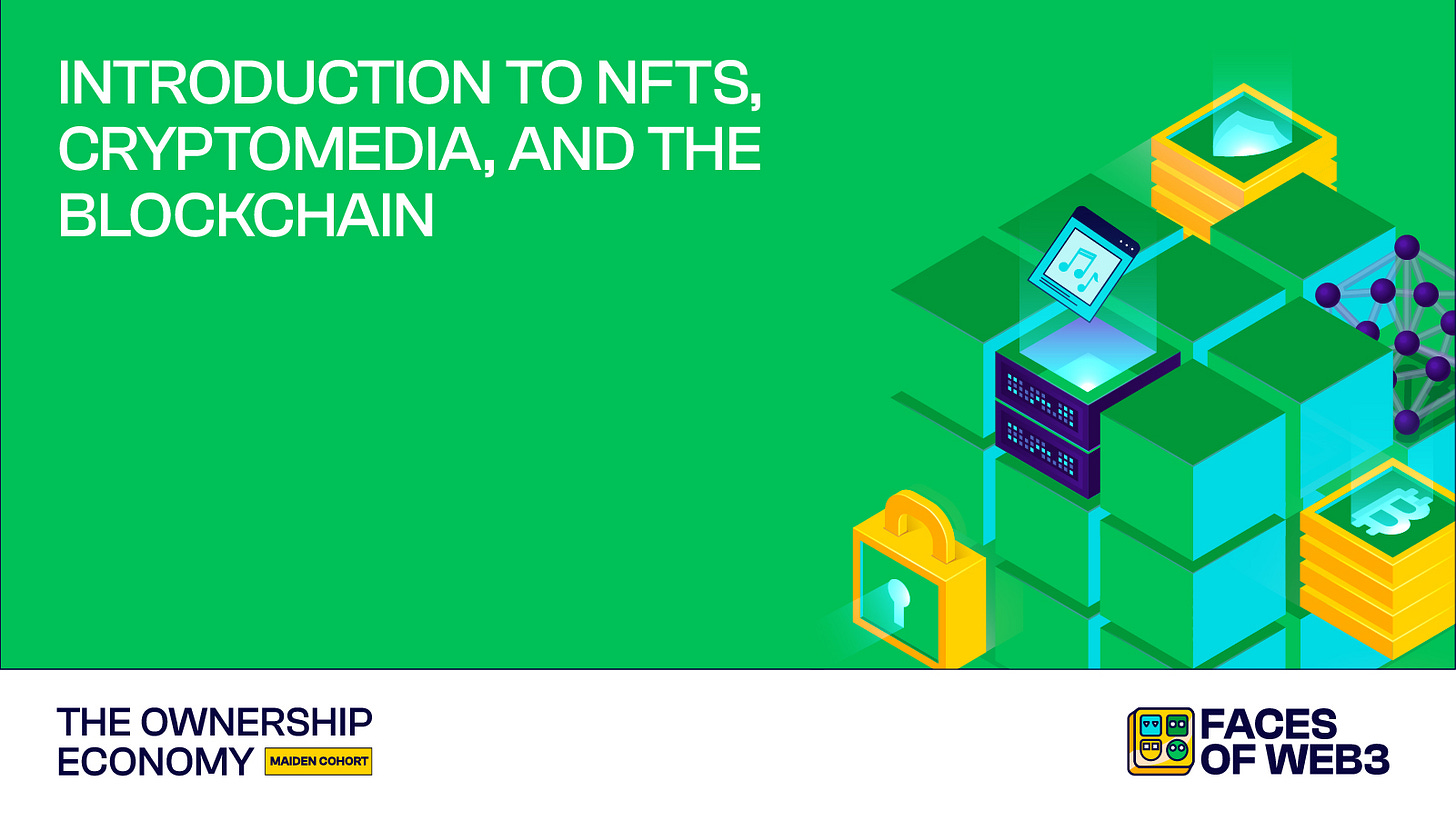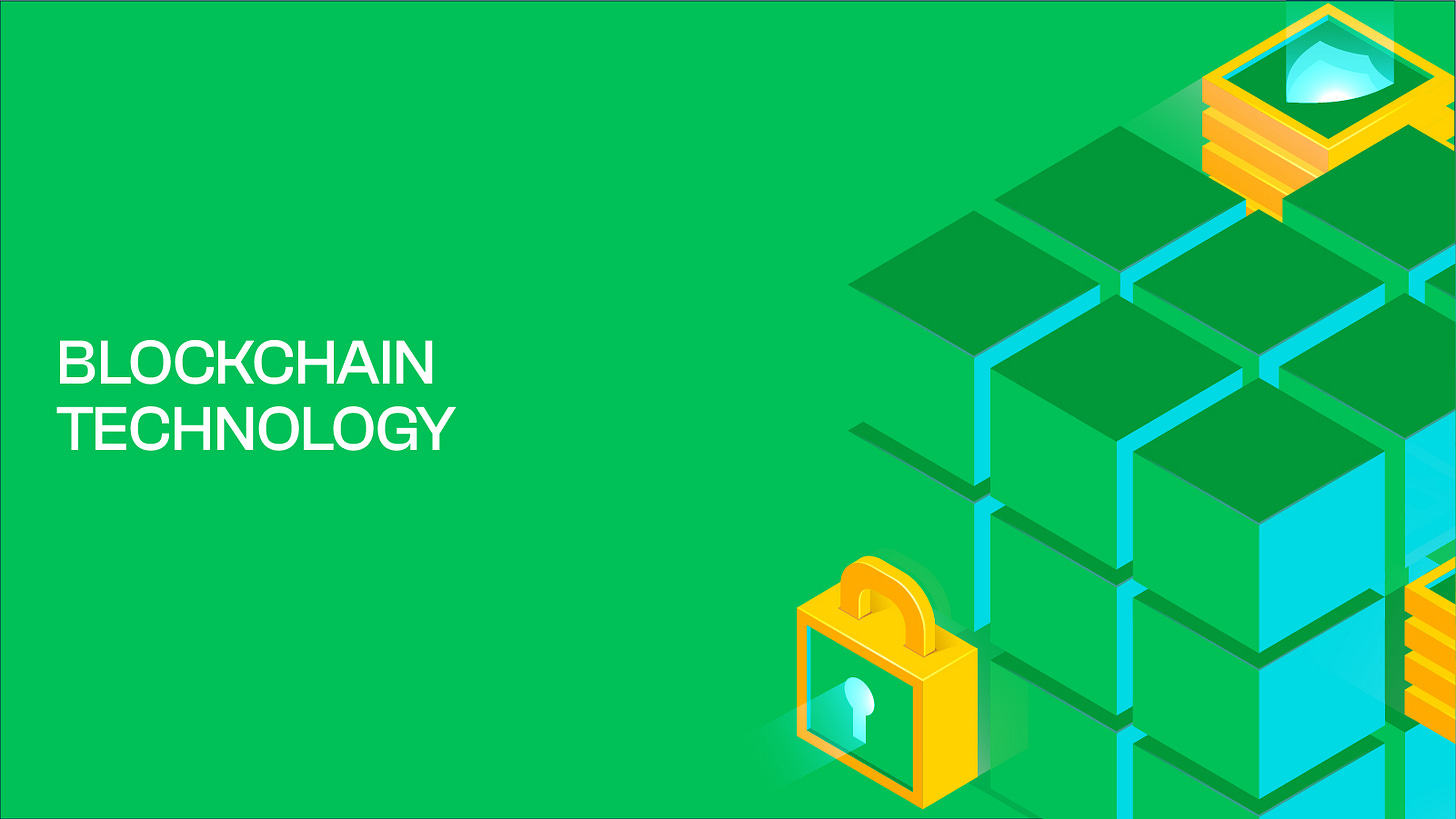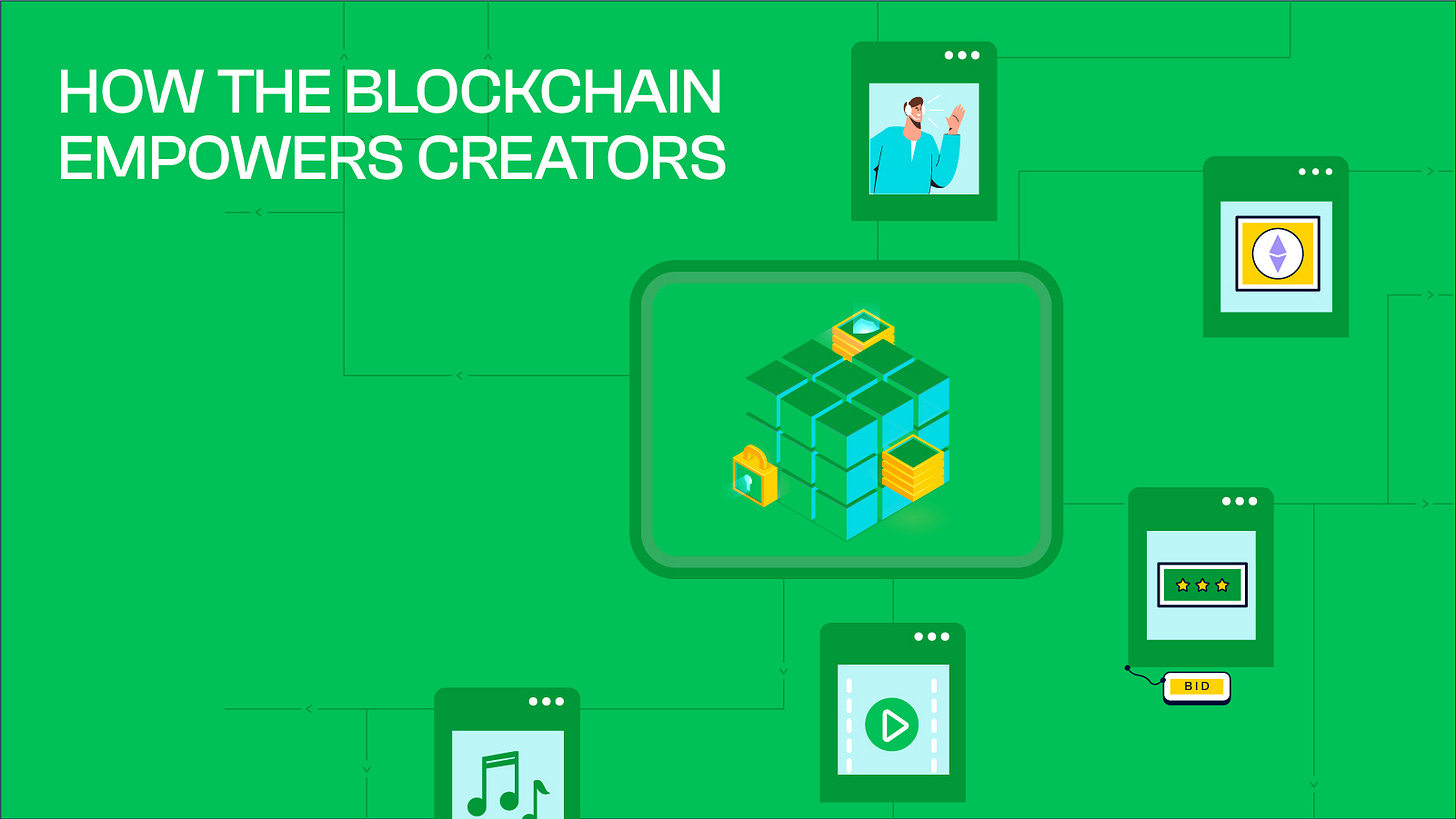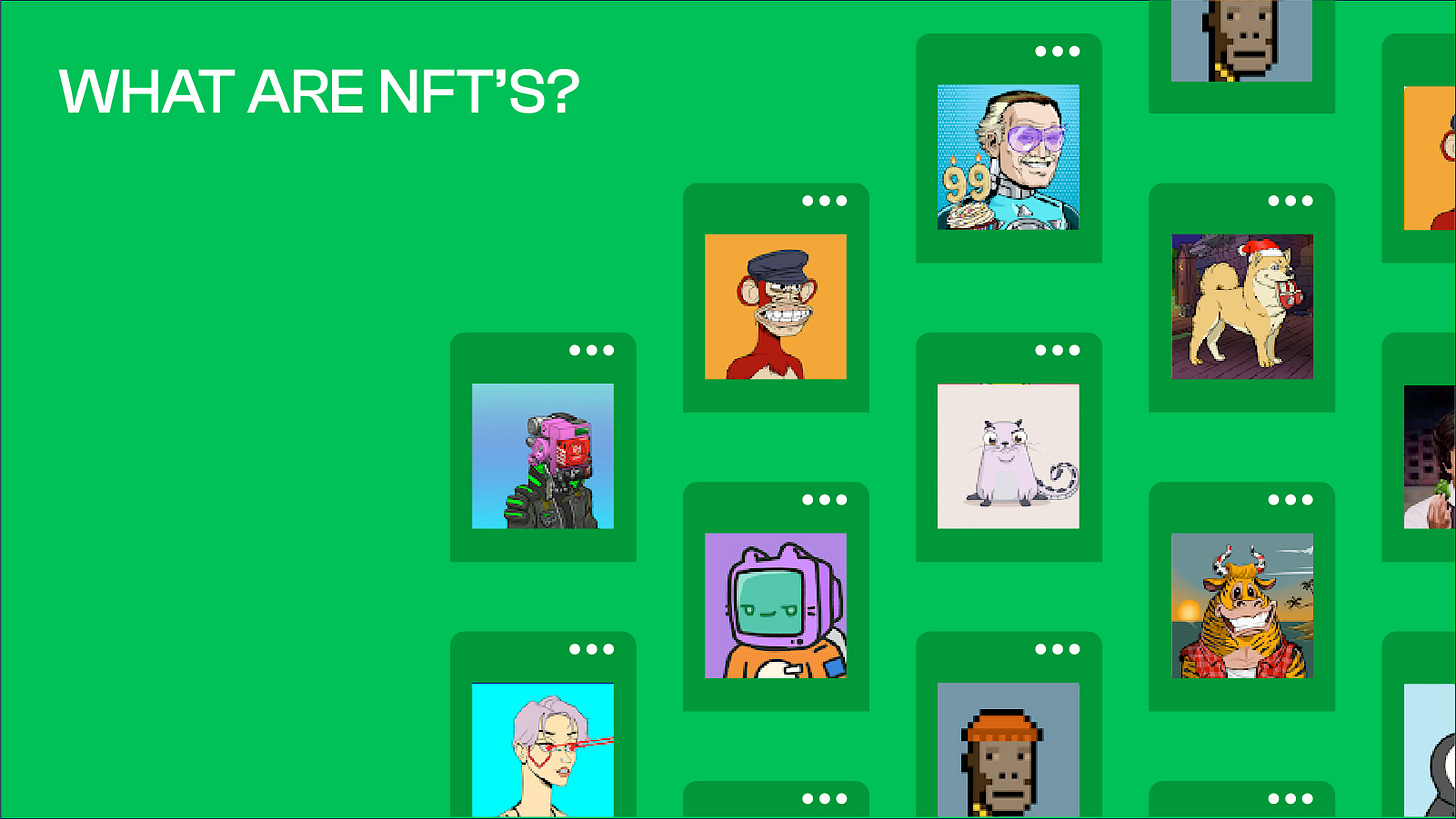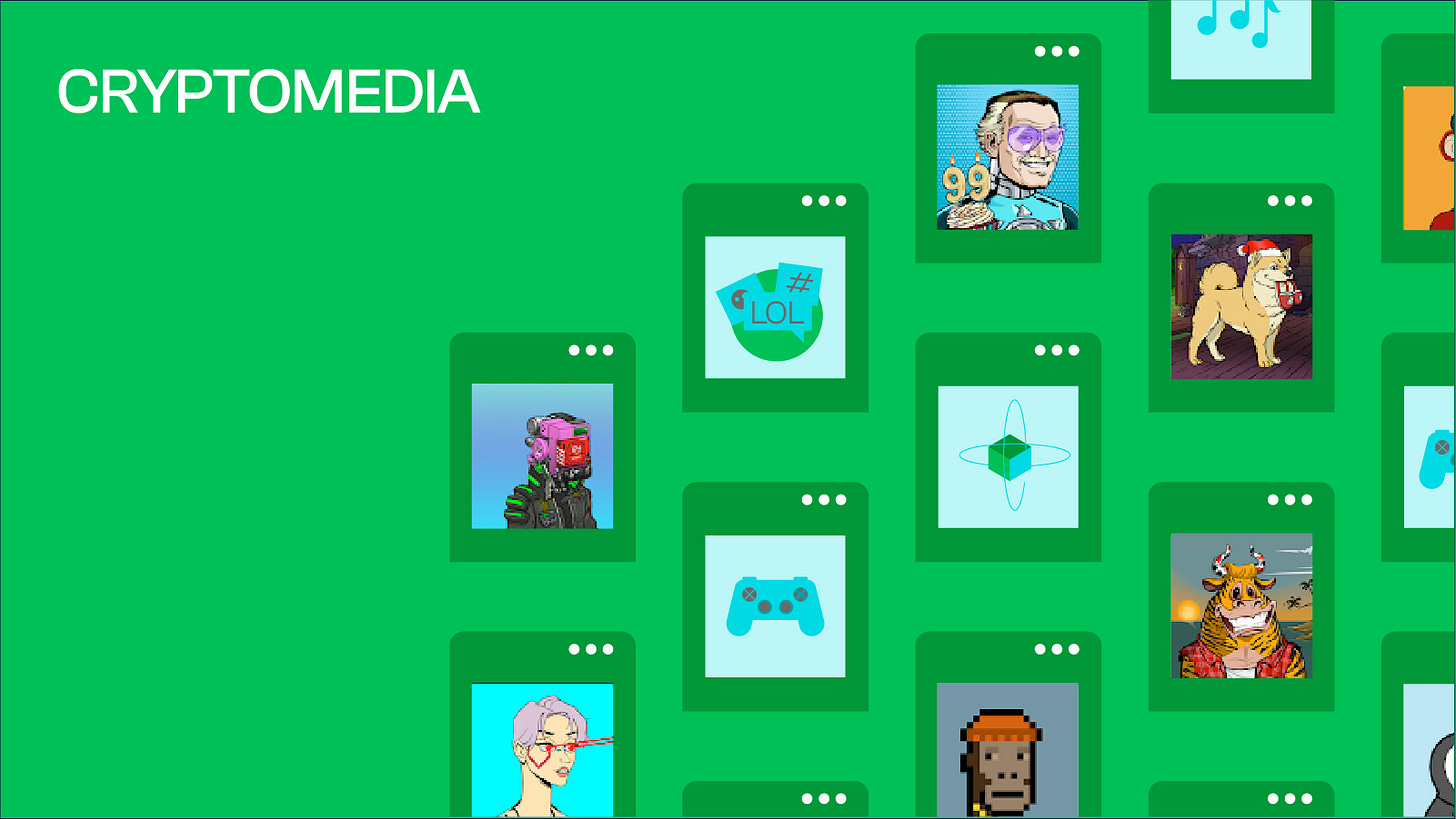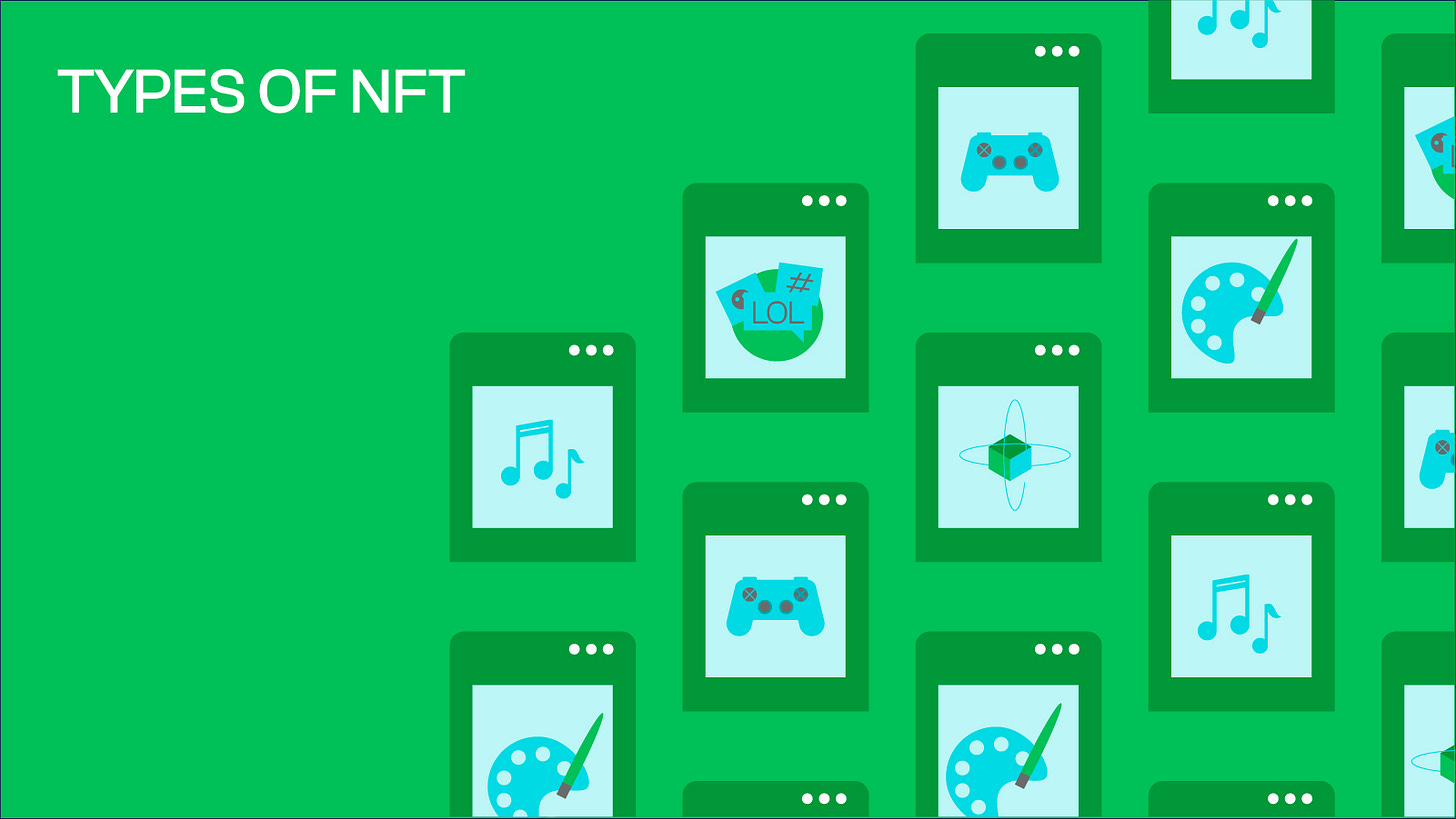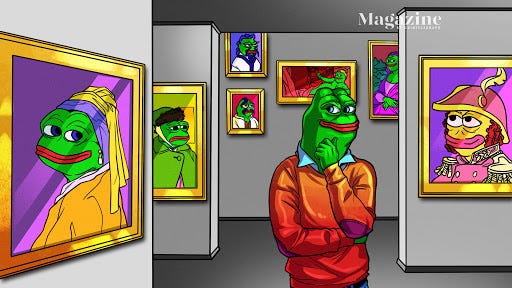Module 3: Introduction to NFTs, Cryptomedia, and the Blockchain ⛓️
A new way to effect ownership on content 🏁🏁
Welcome to Introduction to the Creator and Passion Economy Module 3! This course was created by Faces of Web3.
Previously, we learned about the creator economy, decentralised finance, and how to power your career as a creator with cryptocurrency. You can catch up with the previous modules here.
In this module, we discuss cryptomedia, its history, types, platforms, and why cryptomedia is bigger than just NFTs.
At the end of this course, you will be able to:
Define NFTs, cryptomedia and understand their history
Identify types of NFTs
Explain how cryptomedia is different from NFTs
Know how to mint digital assets on the blockchain
What you should know before starting this course
Web3 is a set of decentralized tools and protocols (or agreements) with the main aim of building a more open internet where users can take ownership of their data. It also gives creators fair control over how they are compensated for their work.
To do this, Web3 harnesses blockchain technology when appropriate—we’ll get into what this means too—and opens up a whole new world to underprivileged and underrepresented users who may not have access to some traditional financial tools, products, and systems.
This course is meant to give you a glimpse into what cryptomedia is. We will go over different related concepts, directions on how to explore each of them in more detail if you choose, real-world use cases, benefits, drawbacks, and how you can get started as a digital creator.
If you’re curious about NFTs, digital assets, what they're all about, whether it’s all hype, the different cryptomedia platforms to build on, how to mint and purchase digital assets, you are in the right place. While it’s not possible to cover every single project and protocol that exists, this high-level overview of cryptomedia will provide you with a solid foundation of the concepts on which to build your knowledge.
So, let’s get into it!
Introduction to NFTs, cryptomedia, and the blockchain
Before diving into the world of NFTs and cryptomedia, it’s important to look at the big picture:
Blockchain technology and the problems it solves
How the blockchain empowers creators
How to secure your valuables on the blockchain
Blockchain technology
The idea of blockchain came about when we needed a cash system that would allow users to transfer money without needing the services of financial institutions. Bitcoin was the first use case of this, and the concept spread to other industries asides finance: marketing, logistics, and supply chain.
A blockchain is a growing list of records (or “blocks” of data) existing across a network of computer systems that are securely linked together using cryptography. It is a digitally distributed, decentralised, public ledger of transactions we can keep track of.
The beauty of blockchain is that it only allows digital information to be recorded and distributed, not edited. It also relies on a decentralised network of users—not a single authority—to record and validate transactions. This means data recorded on the blockchain cannot be altered, deleted or destroyed, making blockchain transactions safe, fast, and tamper-proof.
How the blockchain empowers creators
Blockchain helps creators gain control and authority over their work by giving them the ability to track and monetize their work more efficiently and get paid directly from consumers. It also provides them with a verifiable digital identity and grants them access to upload their creations on a decentralised, tamper-proof database.
This protects their intellectual property from theft and copyright and makes it easier to manage copyrights and licenses by letting the public know when the work was created, by whom, who has access to it, and who has the right to distribute the work. It can also reward creators by distributing tokens to them based on how often the content is viewed.
NFTs and Cryptomedia
Every other week, we hear stories about how one digital artist or the other made a major sale minting their art on the blockchain as an NFT. And that could leave you wondering how you can get in on this.
NFT (pronounced “en-ef-tee”) means non-fungible token. When an item is fungible, you can trade or swap it for a similar item without losing any value in the exchange. Some fungible items are bitcoin, dollar bills, stocks, and commodities.
Now imagine you have one of the first one dollar bills ever printed centuries ago, which was signed by an American president. Would it be valued at the same amount as other one dollar bills circulating in the market? No, it wouldn’t. It’ll be considered one of a kind.
That’s what NFTs are. Non-fungible assets are unique and cannot be replaced by anything else or be broken up and sold in pieces because the value is determined by the whole item. NFTs are unique digital assets stored on the blockchain. No two NFTs are exactly alike, and they hold value based on the rarity of the item, the community driving it, and more.
Examples of non-fungible assets include diamonds, one-of-a–kind trading cards, real estate property, family heirlooms, art collectibles, and non-fungible tokens.
When you mint an NFT, you're simply uploading it to the blockchain. Each NFT has a unique identifier which contains information about that NFT, like who created it, who owns it, and its price history.
What is cryptomedia?
Cryptomedia is an umbrella term for digital assets/media. It’s much bigger than NFTs.
First used in 2019 on Reddit, the term ‘cryptomedia’ builds on the concept of cryptocurrency and subsumes a piece of media that is cryptographically secure. “Digital asset” in this context includes currencies, while crypto media focuses on digital media alone.
Cryptomedia is a medium for anyone on the internet to create universally accessible and individually ownable hypermedia.
Hypermedia is a nonlinear system in which various forms of information are linked together by a hypertext programme. It’s not just limited to plain text; it also includes graphics, audio, video, hyperlinks, and any arbitrary file or data.
So think of cryptomedia as hypermedia with inbuilt property rights. It is an ownership medium for hypermedia that allows for unique and provable ownership of information.
Categories of NFTs
Contrary to what a lot of people believe, NFTs are more than just an image of an artwork with a price tag. In fact, there are an endless amount of potential applications for NFTs. Here are some of those categories:
Avatars and PFPs (picture for proof).
Collectibles, which are sets of NFTs with unique traits.
1/1 NFTs (pronounced “one of one”), which are single-asset NFTs.
Generative art, which is created by a computer in some way.
Game NFTs, which include in-game character traits and rewards.
Music NFTs (which we’d get into later)
Membership NFTs, which grant holders exclusive access to invaluable information and events.
Anything can be an NFT as long as it can be stored on the blockchain. However, as unique as they are, they can largely be put into different category buckets.
Artworks: This is the most popular form of NFTs, and for this reason, it sells the best. The most valuable NFT ever sold is Everyday’s: The First 5000 Days. The piece, created by renowned artist Beeple, is a collage of 5,000 digital images which sold for a whopping $69 million. Artworks give artists the opportunity to sell their best works online, the same way they would physically.
Collectibles: These were the first type of NFTs ever launched. Know how people buy those one-of-a-kind, limited edition trading cards signed by their favorite players, Pokémon cards, or vintage mint condition toys? People can buy and trade virtual versions of trading cards on the market. Some of them sell for over a million dollars. Anything that can be a collectible can be sold on the market by companies and individuals. Bored Ape Yacht Club currently has the most valuable digital collectibles out there.
Music and media: Media files can now be linked to NFTs with the true ownership claim given to an individual. Artists can pre-release their albums on NFT marketplaces before releasing them on traditional streaming platforms and give buyers a share of the album's profits. Tokenizing music has benefited artists in several ways: being able to keep up to 100% of their earnings without worrying about label and streaming platform cuts, providing a premium listening experience, having direct reach to loyal followers, and drawing new audiences. Some musicians and DJs have sold their work and earned millions of dollars in hours. Kings of Leon sold their When You See Yourself album as multiple NFTs in 2021.
Video game assets: Though companies aren’t selling entire games as NFTs, they can sell in-game content like characters, skins, and other in-game items. Some NFT-based video games also reward players with cryptocurrency, digital assets or other NFTs. After Axie Infinity released the very first NFT video-game asset, other games like Cryptokitties, Gods Unchained and Sorare have joined the mix.
Sports memorabilia: This is undoubtedly one of the hottest NFT categories for sports fans. NFTs have been used to capture memorable sports moments in form of short video clips with priceless historical significance. These clips, which can be as short as 10 seconds, feature significant moments in sports history from groundbreaking slam dunks to game-changing touchdowns. The most expensive sports memorabilia ever sold was The Lebron James Dunk, Throwdowns (Series). This clip of the Lakers player dunking a ball sold for over $380,000.
Memes: Based on their popularity among internet users and being a part of popular culture, memes have become a valuable digital asset you can buy and trade in NFT marketplaces. Sometimes, the person in the meme is the actual seller. An example is the meme of the disaster girl which sold for over $470,000. The most valuable meme NFT is currently the Doge meme which sold for an incredible $4 million. Who’d have thought memes could be financially valuable?
Real-world assets: While you might think that NFTs are only associated with digital and virtual assets, they also apply to real-world assets like luxury items and real estate. A Real World Asset NFT is a token that signifies virtual ownership of a physical object. It also establishes legal contracts of warranty, insurance, enforceability and more, thereby providing an extra layer of security. Since tokens cannot be forged, and the digital ledger provides transparency, it can be used to prevent fraud.
Domain names: You can register a domain name and sell it on the NFT market. Crypto domains are a coveted asset. If you buy a domain name on the internet, you can claim exclusive ownership of the name, thereby cutting out those middleman management companies. Some domain name NFT providers are Ethereum Name Service (ENS) and Unstoppable Domains through decentralized domain name services. The only downside of crypto domains is that most browsers do not yet support them.
Virtual fashion: You can own virtual clothing and accessories, but you won’t be able to wear it. Extravagant and fashion-forward individuals who buy fashion NFTs use them to dress up online avatars. These items are uniquely designed and limited in quantity. Burberry and Louis Vuitton have come out with a line of NFT fashion, including kimonos and sneakers for digital avatars.
Virtual land: A virtual piece of land (in games and the metaverse) can be sold as an NFT. This can then be used to create virtual assets and place advertisements in video games. While this might seem like a redundant asset with no real world applications, it has great potential.
Event tickets: NFTs can be used in the form of event tickets facilitating the verification of people’s tickets and identity. Organisers of popular events like concerts and music festivals can use a selected blockchain to mint a limited number of NFT tickets and auction them off. These tickets can be purchased at auction listings and stored in mobile devices through wallets for easy accessibility.
Miscellaneous online items: This category includes anything and everything which haven't been covered in the aforementioned categories. This includes tweets, blogs, Instagram posts, TikToks, and anything minted on a digital ledger and has non-fungibility. For example, Twitter CEO Jack Dorsey’s first tweet was sold for $2.9 million.
In our next course, we will dig deeper into NFTs, the different NFT marketplaces available to you, and how to mint your digital assets on the blockchain.
READING LIST
What is Cryptomedia?
Zora and the rise of cryptomedia
Cryptomedia websites ranked from highest to lowest
Cryptomedia, NFTs, and the next Internet
Cryptomedia: the Future of tech and currency
How blockchain can help content creators
Codecademy: Introduction to blockchain and Crypto

